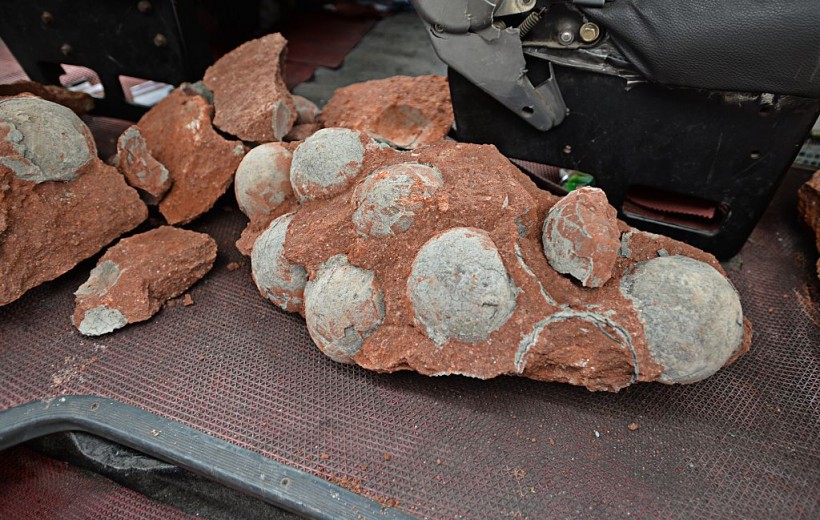
(Photo : STR/AFP via Getty Images)
CHINA-PALAEONTOLOGY-DINOSAUR-FOSSILS
This picture taken on April 19, 2015, shows some of the dinosaur egg fossils found on a construction site in Heyuan, south China's Guangdong province. He Yuan, the Chinese city that holds the world record for largest number of dinosaur eggs has added to its collection after dozens more were unearthed at a construction site, state media reported.
- Smart dinosaurs resembling birds shared communal homes with others
- It presents novel research on the egg-laying patterns of dinosaurs resembling birds
- This discovery reveals a new aspect of these extinct animals.
Remarkable is the discovery of smart bird-like dinosaurs that had communal nests with multiple eggs.
Several clutches of eggs were laid in a single nest, which dinosaurs took turns maintaining.
Smart Bird-Like Dinosaurs Defy Previous Discoveries
Approximately 74 million years ago, dinosaurs deposited 20 eggs in the same nest. According to Live Science, this habitat would be buried in the ground to serve the same purpose as crocodiles and other cold-blooded reptiles.
Troodon is a small carnivore that lived between 74 and 65 million years ago and was similar to modern birds. Scientists know that theropods, such as T. rex and Velociraptor, incubated in their nests.
According to Discover, fossilized eggshells of Troodons indicate they were endothermic, or warm-blooded, and maintained a stable internal temperature.
Co-author Darla Zelenitsky said the study indicates that the Troodon has a body temperature comparable to that of birds to incubate its embryos, as the University of Calgary reported.
They are warm-blooded and can induce the cold-blooded torpor observed in heterothermic modern birds. The same as Troodon, which utilized this strategy to survive during difficult times.
Read Also: Dinosaurs Were at Their Peak When the Asteroid Struck, Causing Extinction Level Event
Communal Nests of Ancient Reptiles
The journal Proceedings of the National Academy of Sciences described how Troodon formosus eggshells were mineralized based on observed patterns. There was a comparison between modern animals and reptiles.
Examining the eggshells' calcite to determine the conditions that led to their formation.
Mattia Tagliavento, the lead author from Goethe University in Frankfurt (paleontology), made a statement regarding the topic. As dinosaurs are the ancestors of birds and reptiles, one would expect them to share characteristics with their ancestors.
During their evolution, avians lost one of their ovaries to enable flight. Eggs are a compensatory mechanism for having only one ovary, and the calcite in eggshells forms rapidly. It enables the replacement of a single ovary.
Reptiles have two ovaries to produce a small number of embryos at a delayed rate of calcite mineralization.
In the case of T. formosus, eggshell formation is delayed, but heterothermy is a factor. Troodon lay ova more slowly than other species, even more slowly than modern birds. It was distinct from bulk layers of eggs.
The scientists examined the weight of Troodon with calcite to determine the number of embryos it laid. Each brood contains four to six eggs, not the total number of eggs in the nest. About 20 embryos are sufficient for a respectable survival rate.
It depicts multiple female Troodons sharing a nest and taking shifts providing for its young. A determinant of the transition from cold-bloodedness to endothermy in dinosaurs. Disclosing how changes occurred in dinosaurs.
After devising strategies to ensure the survival of their offspring, intelligent dinosaurs resembling birds did share a communal nest.
Related Article: Modern Bird Skulls Spark New Questions, Further Studies About Avian Evolution








